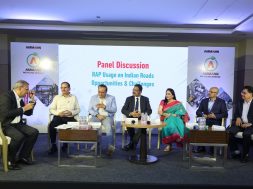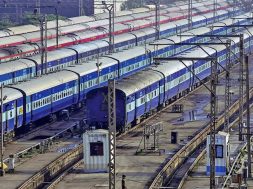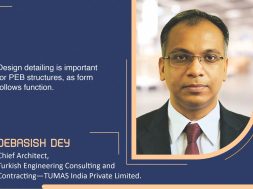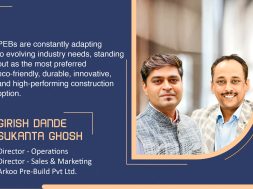Aluminium is a metal of infinite creativity
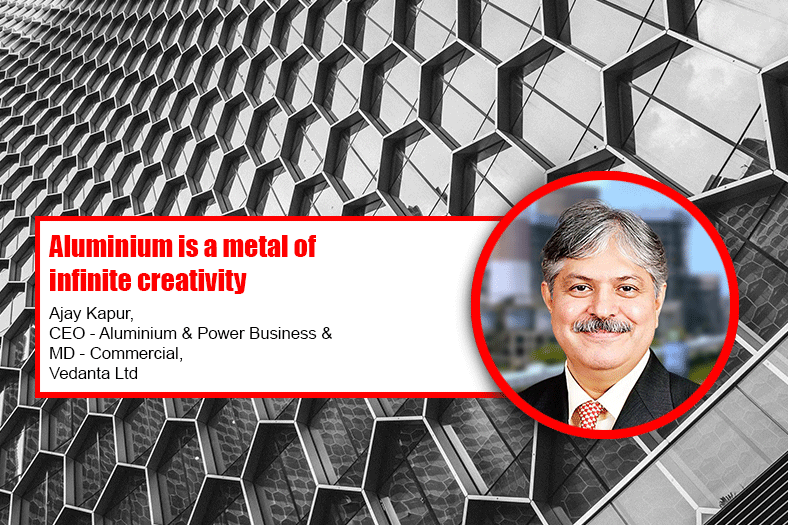
It allows the architect to create structures or designs that are not possible with wood, plastic or steel, says Ajay Kapur, CEO – Aluminium & Power Business & MD – Commercial, Vedanta Ltd.
What makes aluminium a reliable building material?
Almost 25 per cent of the aluminium produced worldwide is used in the construction industry, a feat that stands testimony to the metal’s growing demand in the building and construction industry. Aluminium scores high over other metals due to its high strength-to-weight ratio, corrosion resistance and therefore, low maintenance, reflectivity, high malleability and ductility, and good electrical conductivity. It is light weight while offering strength and resilience. When employed as a base metal in construction, its structures weigh approximately 3565 per cent less than steel, while providing equivalent strength.
Aluminium structures do not require very deep foundations, reducing cost and resources, which has catalyzed the metal’s wide application in high-rise buildings and skyscrapers. Thanks to prefabricated structures, aluminium is also faster, simpler and more convenient to work with, compared to traditional materials. The metal can be construed into countless shapes, making it an immensely popular option for structural applications, and building components like doors, windows, sliding, roofing, curtain walls, sun shading, flashings, balustrades, decorations, and many more.
Aluminium also has an element of glamorous design finish. It can be polished, anodized and coloured as per the designer’s creativity. If we were to further cast aluminium’s prominence as a building material, then according to research, it also offers a high degree of absorption of structure-borne and airborne noise. Moreover, prefabricated aluminium components can effectively reduce construction time and increase the portability of the structure. With applications ranging from warehouses and exhibition setups to storage units, aluminium is a preferred choice for portable structures. With the growing emphasis for green buildings, aluminium is the most preferred as energy-efficient and sustainable material, for it can withstand various climatic conditions, support heavy glass spans for harnessing natural light, provide better insulation, and essentially help meet low energy requirements. Aluminium-intensive buildings are front runners in the global race for green buildings, with numerous sustainable building accolades like top LEED and BREEAM ratings to their name.
What can be said about the level of corrosion resistance the material offers?
Aluminium is aptly called ‘the Metal of Future’ due to its superlative properties, key among which is its phenomenal corrosion resistance which makes aluminium structures highly resilient and enduring in the face of weather elements. Aluminium surfaces naturally form an invisible oxide skin when exposed to the atmosphere, which protects the metal inside from further oxidation giving aluminium and its alloys excellent corrosion resistance.
Appropriate alloy choice, design geometry and detailing, as per the operating environment, can result in some of the most durable architectures ever made. This has greatly catalyzed the employability of the metal for building large and durable structures, as well as a whole host of other industries like energy security, national defense, aerospace, automobile, infrastructure, packaging etc.
When it comes to the selection of aluminium as a building material for different projects, what are the finer points to be noted?
As the global population increases, the need for taller, more energy-efficient and environmentally compatible buildings will rise. The dynamically shifting consciousness of the world is making it look for effectual solutions for smart building trends suitable for the 21st century, like automation and control of the façade elements thereby providing optimal light conditions, air flow, solar shading, and energy storage and distribution. Aluminium is the perfect material for such systems, applicable for large-surface use and extreme loading.
Aluminium is a metal of infinite creativity at the hands of an architect. It allows him or her to create structures or designs that are not possible with wood, plastic, or steel. Although India has established a significant footprint in exploring myriad aluminium applications used in buildings and construction, there is a long way to go in attaining design mastery using the properties of this metal. With increasing focus on building and construction sector, there are vast opportunities for aluminium applications and development of new alloys and other customizations to make the structures as light and as sturdy as possible.
Aluminium ingots, billets and rolled products find the most usage in creating architectural structures. These are then extruded into structural components which are further fabricated for usage in a diverse range of applications like floating ceilings, windows, doors, stairs, wall panels, roof sheets, curtain walls and many more. Aluminium flat-rolled products, hot- and cold-finished, are used for the production of aluminium sheets which are widely used in the construction of warehouses, roofing, etc. Magnesium-silicon 6xxx alloys in billet form are the most conducive for extrusion purposes, offering a vast scope for manufacturing the most intricate architectural shapes.
Vedanta Aluminium, India’s largest producer of aluminium and value-added products like billets, is well poised to cater to this emerging need with its top-quality products. Vedanta produces more than half of India’s aluminium at 1.9 million tonnes per annum (MTPA) in FY20, with a state of-the-art billet casting capacity of 430KT.
Customers can either choose from a wide range of alloy specifications that are already offered or request customizations as per their requirements. Unwavering focus on customer technical services support, R&D, innovation and new product/alloy development and superior product quality have made Vedanta Aluminium the preferred billet supplier to extruders in India and abroad.
Can you also emphasize the role of aluminium in the creation of “infinite” elements for interior design?
In the world of interior design, aluminium is a relatively new entrant that has fast won the title of ‘slick contemporary metal’ for a modern and minimal look. Interior designers are increasingly picking up aluminium pieces for a variety of décor and functional items to create modern high-end looks. Starting from lampshades, tables, chairs, shutters to decorative wall panels, the metal’s smooth and lightweight features have won hearts. Aluminium has earned its place in modern homes due to its inherent glamorous design finish too. It is almost impossible to find aluminium free kitchens as the metal’s applicability goes beyond utensils and is amply found in kitchen appliances. It is used for the manufacture of commercial fittings, such as display cabinets, channels and strips for electrical systems and equipment along with enclosure systems (railing etc.), lighting, kitchen furniture, home furnishings, bathrooms, decorative frames, awnings, not to mention applications for garden and pool fittings.
A walk around any twentieth-century house or apartment will reveal that the metal is present in pre-formed structures like handles, furniture parts and heat sinks to give an edgy contemporary metallic look. It is these and several other features of aluminium that has made it enter the everyday landscape of modern living. Aluminium has found a diverse range of applications like floating ceilings, windows, doors, stairs, wall panels, roof sheets, curtain walls and many more. Fenestrations have made aluminium the most preferred material, occupying ~55 per cent share of the total fenestration market in India, followed by 25-30 per cent share of wood and steel.
Aluminium is widely preferred for its availability in a broad range of customizations and price points, with a faster production cycle as compared to uPVC. Higher aluminium usage in construction can substantially reduce the cost of overall foundation without any compromises on the structural stability and strength. In a climate change-triggered world, sustainability has become the cornerstone of the evolution of every industry sector.
In this regard, aluminium lends to ‘infinity’ not just through applications in innumerable design elements, but also scores brownie points for its infinite recyclability, making it equally valuable at the end of the life cycle. After all, according to the International Aluminium Institute, three-quarters of the one billion tonnes of aluminium ever produced has been recycled and is still in productive use.
How has aluminium performed as an artist’s muse for the creation of artistic installations and sculptures?
Much before aluminium’s mass production, the metal was as expensive as gold almost 150 years ago. Today, its wide availability has made it a desirable, convenient and affordable muse for artists and architects. Features like lightweight-ness, resistance to corrosion, supreme formability, elegant finish, reflectivity have made a preferred metal to work with, for indoor and outdoor installations. Added to this, when compared to bronze, which has been the traditional choice for installations and sculptures, aluminium has several advantages. It is less expensive than bronze casting, easier to install than bronze due to its lightweight, offers higher resistance against corrosion and has great reflectivity and shine.
These features have allowed the metal to find its way into prominent displays in iconic buildings across the world like the Empire State Building, Ferrari World entertainment park in Abu Dhabi, Buckminster Fuller’s Dymaxion house, the modernist Aluminaire House in the United States, London Aquatics Centre and Sage Gateshead concert hall in Great Britain, and many others.
Cookie Consent
We use cookies to personalize your experience. By continuing to visit this website you agree to our Terms & Conditions, Privacy Policy and Cookie Policy.




